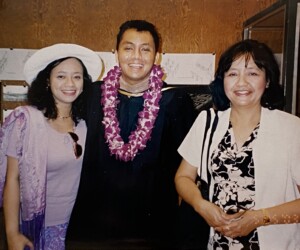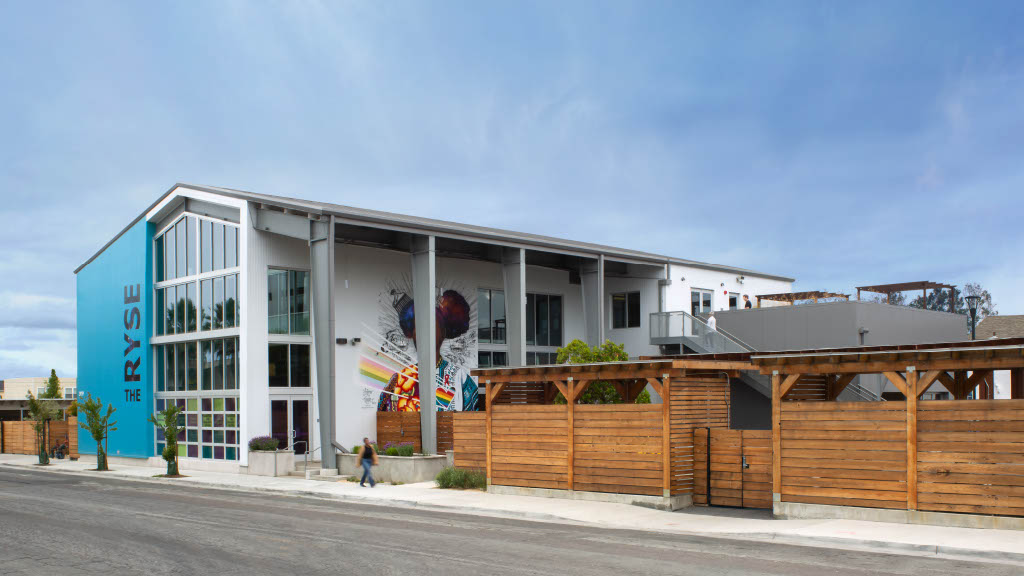 In the ever-evolving realm of architecture, Winston Win stands as a distinguished figure. He brings a unique blend of creativity and community-centric design to the table.
In the ever-evolving realm of architecture, Winston Win stands as a distinguished figure. He brings a unique blend of creativity and community-centric design to the table.
The Architect's Journey
Winston’s architectural journey traces back to his early years in Chicago and Southern California. His father’s work as a radiologist for the Navy moved his family to a new home every few years. His mother was a stay-at-home mom during his early childhood and later worked in different jobs, first as a counselor at the Women’s Resource Center in North San Diego County, and then in medical billing. Winston’s childhood experiences with diverse environments and communities sparked a fascination with the process of building and living differently. Immersed in Legos and the art of imagination as a child, he later learned about the architect’s role and the design process during his studies at Cal.


Formative Years at Cal
 Choosing Cal for both undergraduate and graduate studies, Winston delved into the world of architecture and the social factors of design. At Berkeley, he clarified his architectural focus, and built valuable connections with faculty and practicing architects. It was during his grad school days that he crossed paths with Anne Phillips, a meeting that would shape his future significantly.
Choosing Cal for both undergraduate and graduate studies, Winston delved into the world of architecture and the social factors of design. At Berkeley, he clarified his architectural focus, and built valuable connections with faculty and practicing architects. It was during his grad school days that he crossed paths with Anne Phillips, a meeting that would shape his future significantly.
Career Arc: From Intern to Business Partner
Winston’s career trajectory from intern to firm principal was forged in Anne Phillips’ office. Over 14 years, he evolved from a junior designer role to becoming the firm’s first senior project manager and associate. Winston became Anne’s business partner in 2018. This transition marked the rebranding of the firm from Anne Phillips Architecture to Phillips Win Architecture, showcasing Winston’s commitment to carrying forward the legacy of impactful work.

Lowney: The Business of Architecture
Winston’s journey also included 3 years at Lowney Architecture, a medium-sized firm, that proved to be a pivotal experience. Working in a dynamic environment with Ken Lowney, he gained insights into the business side of architecture. From exposure to a growing practice, seeing the importance of healthy project financials, and the impact of nurturing client relationships, Winston’s experience at Lowney provided valuable lessons that shaped his perspective on effective firm management.
Notable Projects: RYSE Center
One of Winston’s proudest achievements is the RYSE Center, completed two years ago. Awarded the AIA East Bay Beyond Award in 2022, the project exemplifies the firm’s commitment to service organizations. The RYSE Center, a unique blend of renovation and new construction, presented challenges, especially during the global pandemic. Winston highlights the rewarding experience of delivering a project that positively impacts both the client and the community it serves.

Community Engagement: A Core Value
For Phillips Win Architecture, design which engages the needs of a community is a core value. Whether working on affordable housing projects or collaborating with service organizations, Winston emphasizes the importance of understanding and positively impacting the community. The firm’s community-centric approach weaves through projects large and small, in urban, suburban, and rural locales, and encompasses renovation and new construction.
Lessons Learned and Advice
 Reflecting on his career, Winston acknowledges the importance of early exposure to the architectural profession and seeking mentors. He would advise his younger self to start exploring opportunities in architecture at an earlier age, emphasizing the value of mentorship.
Reflecting on his career, Winston acknowledges the importance of early exposure to the architectural profession and seeking mentors. He would advise his younger self to start exploring opportunities in architecture at an earlier age, emphasizing the value of mentorship.
Learning and Growing through the AIA
Winston highlights the significance of organizations like AIA and AIAS in providing platforms for learning and networking within the architectural community. As a regular participant in AIA East Bay’s Design Tours, he was encouraged to participate in its leadership in 2010. Since then, Winston has served on the Design Tours Committee, and on the Board of Directors from 2014 through 2018, including as chapter president in 2017. He currently serves as member of the AIA California Board of Directors, a position he has held since 2017.
Conclusion
 Winston Win’s professional journey is defined by his passion for good design and what it can do to uplift people and places. As the principal of Phillips Win Architecture, he continues to shape spaces that are both notable for their design and contribute meaningfully to the communities they serve. In the ever-expanding canvas of architecture, Winston Win’s story is one of inspiration and a dedication to making a positive impact.
Winston Win’s professional journey is defined by his passion for good design and what it can do to uplift people and places. As the principal of Phillips Win Architecture, he continues to shape spaces that are both notable for their design and contribute meaningfully to the communities they serve. In the ever-expanding canvas of architecture, Winston Win’s story is one of inspiration and a dedication to making a positive impact.
